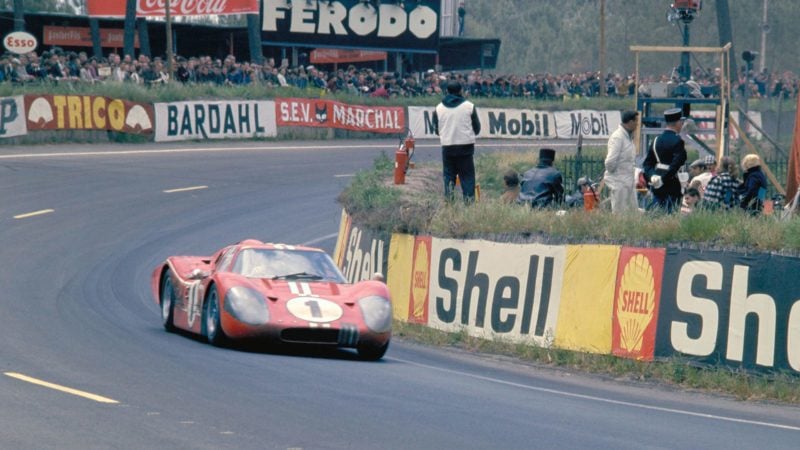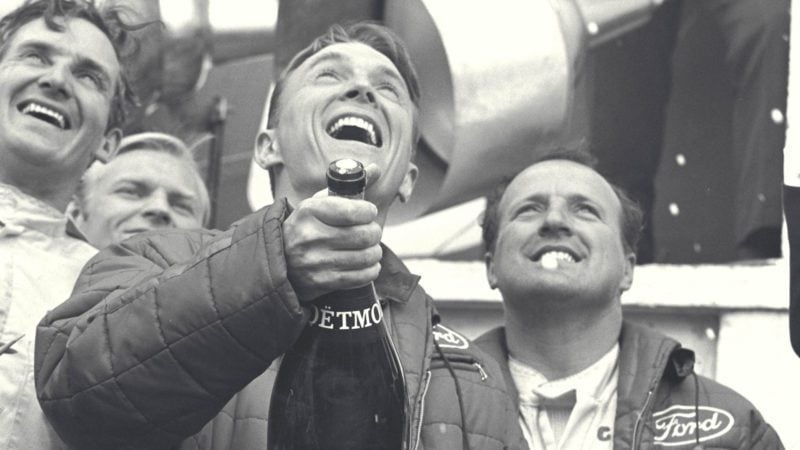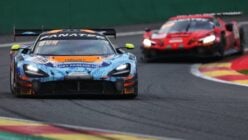There’s no shortage of great racing drivers throughout the history of motorsports. However, it takes someone truly special to reach legendary status. One driver to reach that pinnacle is Dan Gurney.
Sadly on January 14, we lost Gurney due to complications from pneumonia. At 86 though, he lived a full life many gearheads can only dream of.
Gurney’s love of speed and racing started during his teenage years, when his family relocated from New York to Southern California. This was during the height of the hot rod boom and Gurney instantly took to the culture.
In 1950, at the age of 19, Gurney built his first race car. Powered by a Ford-flathead V8, he took his creation to the Bonneville Salt Flats and set a speed of 138mph.
When the Korean War broke out in the summer of 1950, Gurney went off to serve his country as an artillery mechanic.
Upon returning to the US, he began racing again.
Then in 1957, he got his first big break on his way to being a professional driver. Frank Arciero invited Gurney to do a test run in the Arciero Special. It was a car that even Carroll Shelby and Ken Miles couldn’t tame. Tame it Gurney did however, and went on to finish second in the Riverside Gran Prix that year.
This caught the attention of Ferrari importer Luigi Chinetti. For the 1958 running of Le Mans, Chinetti teamed Gurney up with Bruce Kessler in a Ferrari 250 TR. Unfortunately, they crashed out of the race.
Nonetheless, Gurney impressed none other than Enzo Ferrari. For the 1959 Formula One season, Ferrari offered Gurney a factory racing contract for four Grand Prix.
Gurney was well on his way to having a legendary career.

During his 10-year driving career, Gurney excelled at pretty much every racing discipline he dabbled in. Winning races in Sports Car, Indy Car, NASCAR, and Formula One, he is one of only three drivers to ever accomplish this feat. He shares that prestigious honor with Mario Andretti and Juan Pablo Montoya — deeply impressive company.
In 1964, Gurney teamed up with Shelby to create their own race team. Known as All American Racers in the US and Anglo American Racers in the UK, it was a successful endeavor. Even today AAR continues to have varying degrees of success throughout motorsports — and beyond.
In 2015 when the SpaceX Falcon 9 rocket returned to Earth for landing, it set down on a set of AAR legs.
Throughout his career as a driver and owner, Gurney pioneered some incredible things for motorsports.
During his 1967 win at Le Mans with A.J. Foyt, Gurney started what might be the best tradition in all of motorsports. While on the podium, Gurney shook the bottle of champagne and began spraying Foyt with it. Now more than 50 years later, winners from all racing disciplines carry on the tradition.

At the same Le Mans race, Gurney is credited with another addition to motorsports. At 6’2”, Gurney was well above the average height of most racing drivers. Couple that with the low profile of the GT40 race car and it was a tight fit. This is where the “Gurney Bubble” comes in.
With a small bubble added to the roof of the GT40, it allowed Gurney to sit comfortably in the car with his helmet on. While it didn’t give the car any performance advantage, the added comfort for Gurney probably helped lead them to victory.
In 1968 Gurney also brought about a change in the safety of motorsports. While he wasn’t the first to wear a full-face crash helmet, his status helped bring it to the world’s attention after the Indy 500 that year.
In 1971, Gurney pioneered the “Gurney Flap”. This small piece of metal attached to the rear wing of a car was dubbed the secret weapon of AAR. This angled aluminum strip works much like an airplane wing, only in reverse. Instead of providing lift, it creates more downforce to keep the car planted.
Today, the Gurney Flap is commonplace on several race cars.
While there’s a ton we can say about Gurney and his legacy this is only a small part of what he leaves behind.
For another overview of Gurney’s life, check out the tribute from Indy Car below:









